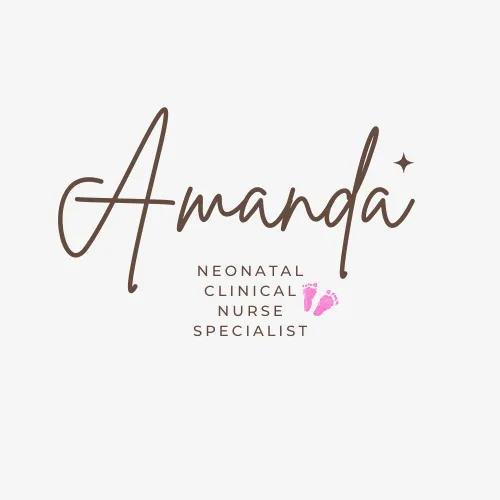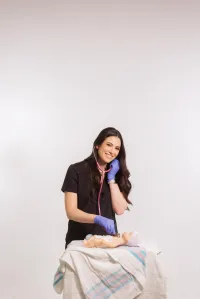
Welcome to Amanda's NICU Education

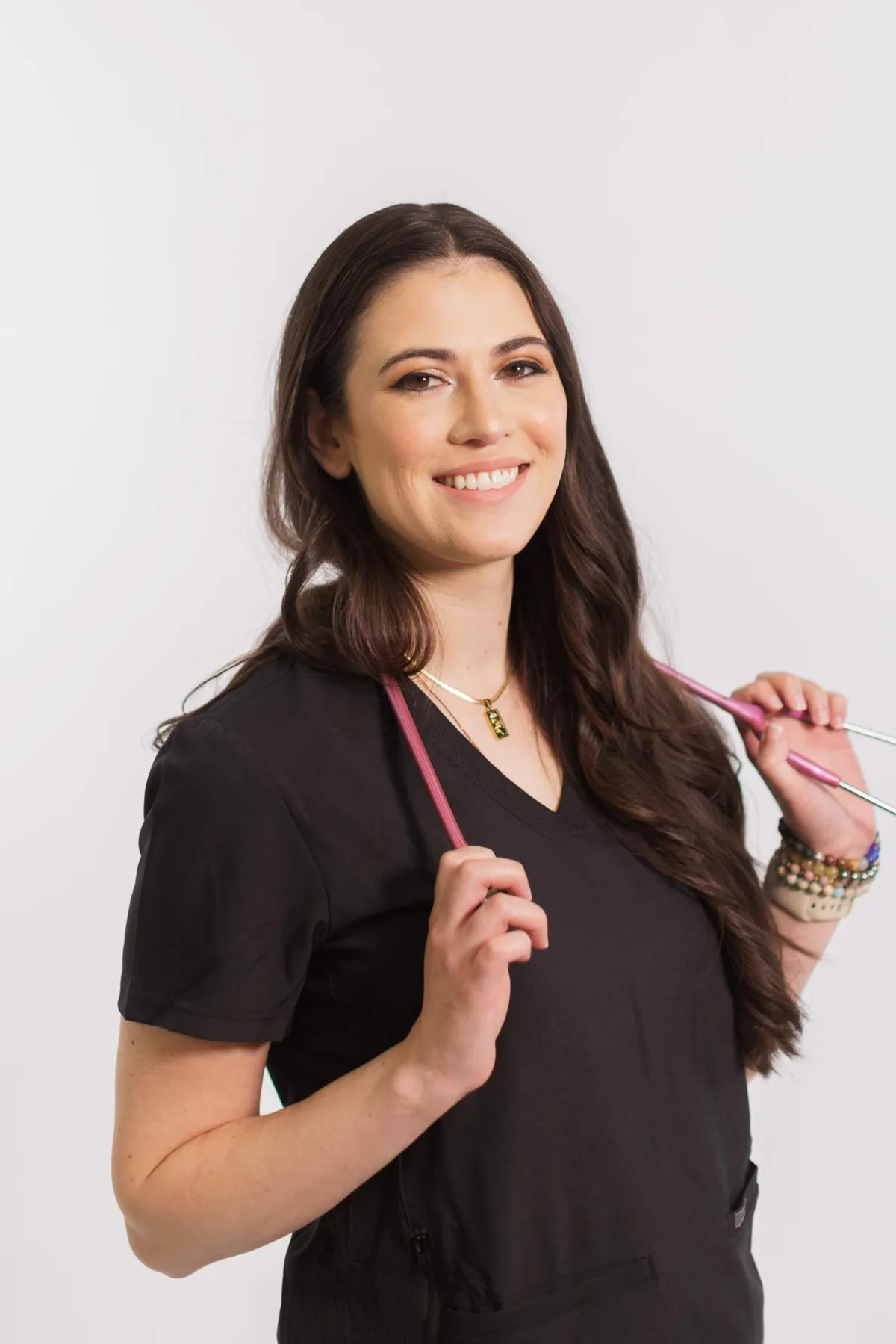


Hi! My name is Amanda. I'm a NICU nurse, Clinical Nurse Specialist, NICU Educator... basically your NICU BFF. If you want to talk NICU, I'm here for you! I love everything about NICU nursing and I'm eager to learn and share my knowledge with all my NICU friends.
I have been a NICU nurse since 2009 I am currently a Clinical Nurse Specialist in a Level IV NICU in Los Angeles.
I am passionate about educating the next generation of NICU nurses. I share my knowledge through platforms such as Instagram and Facebook and am excited to have you here on my website!
Click on the button below to sign up for my newsletter filled with NICU education and tips for all experience levels.

Not very many people love taking tests but as a self-acclaimed "forever student" who has taken (and passed) five different certification exams I am no longer afraid of tests! "Way to brag", you might be thinking but I want to help YOU pass your certification exam too!
Introducing Amanda's RNC-NIC Success digital course - your ultimate study companion!
Gain unlimited, on-demand access for life, ensuring you're primed to ace your certification exam.
I'm here to help you succeed and I can't wait for you to share with me that you PASSED the RNC-NIC EXAM!!!









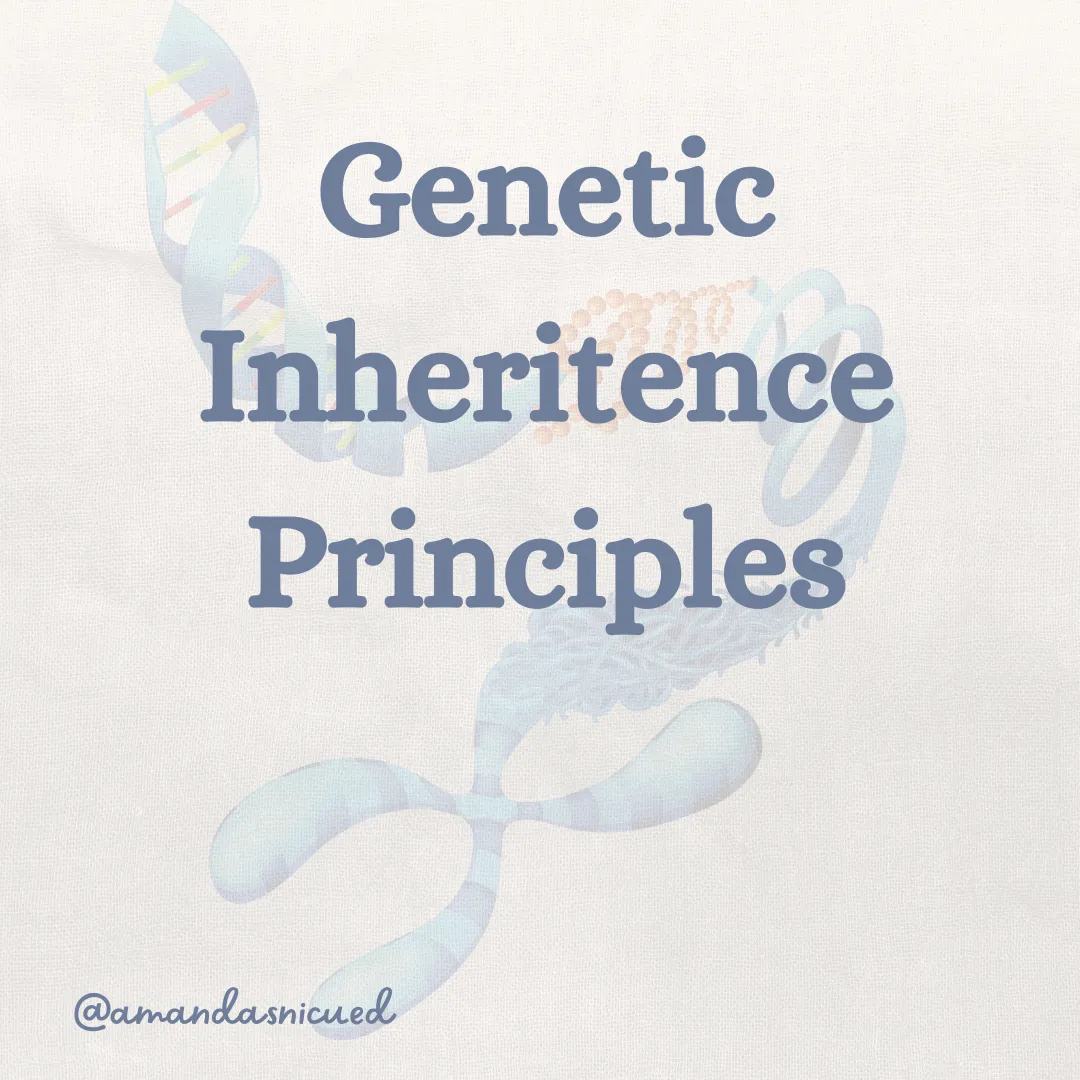
Genetics 101
How do you feel about genetic disorders?
I don’t know about you, but sometimes I struggle with understanding genetic principles. Let’s review the basics together, then we will dive into a few different genetic conditions we see in the NICU and consider how we should adapt our nursing process when caring for these babies and their families.

Recall that a gene is a segment of DNA that codes for hereditary information needed for human development or function. Each DNA strand is coded with four different nucleotides, and the arrangement of those nucleotides determines the information that will be coded in that gene.
Genes are packed together in linear order to form chromosomes. Our chromosomes are packed in the nuclei of the cell. We typically have 46 different chromosomes that are organized into pairs. 44 of the chromosomes are termed autosomes, the other 2 are the sex chromosomes (XX or XY).
We obtain half of our genes from each parent through inheritance patterns. Inheritance patterns of single gene diseases are often referred to as Mendelian inheritance patterns. Gregor Mendel was an Austrian-Czech biologist who first observed the different patterns of inheritance in his garden peas and determined probabilities for recurrence of traits. Interesting, right?!
Autosomal Dominance: In autosomal dominance (AD) patterns there is one gene that is mutated or faulty. Since it is a dominant gene, only one copy of the mutated gene is needed to cause a condition. Children born to parents with an AD condition have a 50% chance of inheriting the condition. Some examples of autosomal dominant disorders include neurofibromatosis, Autosomal Dominant Polycystic Kidney Disease, and Noonan syndrome.
Autosomal Recessive: In autosomal recessive (AR) patterns, two mutated genes need to be inherited to be affected by the condition. Parents who have one mutated gene are considered “carriers”. When both parents are carriers, their children have a 25% chance of having a child affected with the condition and a 50% chance of a child who is a carrier. Some examples of autosomal recessive genes include cystic fibrosis, sickle cell anemia, and Tay-Sachs disease. Cystic Fibrosis is the most common AR disorder (I would know about it for the certification exam).
Sex linked: Sex linked conditions are often associated with the X chromosome, as it has more genes compared to the Y chromosome. Sex linked inheritance includes X-linked dominant conditions, where a mutation on the X chromosome causes the conditions even if the other X chromosome is normal. In X-linked recessive conditions, biological males are usually affected whereas biological females are generally unaffected or only mildly affected. Some examples of X-linked conditions include Hemophilia A and Duchene Muscular Dystrophy.

Genetic testing:
There are many types of genetic testing both prenatally and after birth. Guidelines from ACMG and ACOG both recommend all pregnant women have the option to undergo diagnostic fetal testing for aneuploidy and neural tube defects.
Screenings during the first and second trimester evaluate markers (alpha fetoprotein, hCG, unconjugated estriol, and/or inhibin A). Fetal DNA from the placenta can also be detected in maternal blood through cell-free DNA analysis, also known as noninvasive prenatal testing (NIPT). Screening tests provide an indication of risk and are not diagnostic.
More invasive methods of prenatal genetic testing is chorionic villus sampling (CVS), in which a sample from the placenta is collected for genetic testing, or amniocentesis, where amniotic fluid is sent for testing.
Specific types of genetic testing look at all chromosomes, specific chromosomes, or details like the nucleotides on the DNA! Let's briefly review the different diagnostic tests that are performed.
Karyotype: provides a representation of an individual's chromosomes to identify chromosomal rearrangements. Karyotyping provides a comprehensive view of the genome and is useful for recognizable syndromes (T21, T18, T13, or monosomy)
FISH: Fluorescence in situ hybridization (FISH) looks at specific genetic sequences and can detect smaller abnormalities than a karyotype. It is useful for targeted assess of the copy of a specific chromosomal region and has a rapid turnaround time.
Microarray: can be used to detect the expression of genes. A microarray could be used when a newborn presents with unexplained congenital abnormalities or a karyotype is inconclusive (e.g. microdeletions/microduplications, translocations, and those with atypical breakdowns which may be missed by FISH).
Whole exome sequencing (WES) analyzes the protein-coding regions of DNA to identify variations that may cause disease (e.g. inborn errors of metabolisms, Noonan spectrum disorders, and certain cardiac malformations)
Newborn Screening is provided on all newborns in the United States, unless parents opt out. Each state has different conditions that are screened. The newborn screen is not diagnostic and will require confirmatory testing.
Check out what your state screens for
Now that we have reviewed some of the basics when it comes to genetics, let’s review a few specific genetic disorders that we see in the NICU.
Trisomy 21
Trisomy 21 (T21), also known as Down Syndrome, occurs when there is a full or partial extra copy of chromosome 21. The additional genetic material results in characteristic traits in affected individuals (the phenotype). Each year, about 5,700 babies are born with T21 and it is the most common chromosomal condition diagnosed in the United States. Characteristic features of babies born with T21 include hypotonia, malformations including congenital heart disease, duodenal atresia, and tracheoesophageal fistula. Additional features include midfacial hypoplasia, a depressed nasal bridge, upslanting palpebral fissures, epicanthic folds, Brushfield spots, micrognathia, excess nuchal skin, single palmar creases, clinodactyly, and increased distance between the first and second toes. Options for diagnostic testing include FISH, karyotype, and microarray.
AAPs Health Supervision for Children with Down Syndrome
Trisomy 18
Trisomy 18 (T18), also known as Edwards Syndrome, occurs when there is an extra copy of chromosome 18. T18 occurs in about 1 in 7,000 live births with about 527 babies affected each year. Babies with T18 have characteristic features including growth restriction, complex cardiac malformations, hypotonia, microcephaly, low-set ears, and overlapping digits. Trisomy 18 has a poor prognosis, most patients don’t survive beyond the first weeks to months of life. T18 always holds a very special place in my heart because my first ever primary was a baby girl with T18. I had the privilege of taking care of her and her family for several weeks before she passed away. I will always remember her and her sweet family.
Trisomy 13
Trisomy 13 (T13), also known as Patau syndrome, occurs when there is an extra copy of chromosome 13. Characteristic features of babies with T13 include growth restriction, microcephaly, coloboma of the iris, micropthalmia, low set ears, cleft lip and palate, and polydactyly. These babies also may have anomalies of their central nervous system (holoprosencephaly), cardiac malformations, omphalocele, renal malformations, and urogenital malformations. I always remember T13 babies having a lot of mid-line defects (CNS, cleft lip/palate, cardiac, omphalocele, etc.). These patients also have a poor prognosis with up to 90% dying within the first year. Those who survive the first year have risk of additional complications later in life such as cancer and seizures.
The Support Organization for Trisomy (SOFT) is a network of families and professionals who are dedicated to supporting families with babies who have Trisomy 18 and 13. Historically these conditions were considered incompatible with life but there have been patients who have survived into childhood with treatment. It is important for us as health care professionals to understand that these families deserve a shared-decision making approach to management of their child.

Image retrieved from trisomy.org

A basic understanding these genetic principles and disorders is essential to our nursing practice. Understanding risk based on prenatal screening and advocating for genetic testing when appropriate can support families in receiving an appropriate diagnosis.
Utilize the resources I linked to share education and support with the families we care for. These resources can help families cope with challenging and scary diagnoses. Additionally, it can help them prepare for the long term needs of their child.
Do you have experiences caring for these patients and families? I'd love to hear how you support them, and how you care for yourself. Email me back, I always love to hear from you.
Amanda xoxo
Missed my other newsletters? Click here to read them!
Let's Study Together! Join my Certification Course
Reference:
Matthews, A.L., & Robin, N. H. (2021). Genetic Disorders, Malformations, and Inborn Errors of Metabolism in Merenstein and Gardner’s Handbook of Neonatal Intensive Care (9th Ed.) Elsevier
Jnah, A & Trembath A (2018) Introduction in Fetal and Neonatal Physiology for the Advanced Practice Nurse. Springer
Genetic Alliance; District of Columbia Department of Health. Understanding Genetics: A District of Columbia Guide for Patients and Health Professionals. Washington (DC): Genetic Alliance; 2010 Feb 17. Appendix B, Classic Mendelian Genetics (Patterns of Inheritance) Available from: https://www.ncbi.nlm.nih.gov/books/NBK132145/
https://www.cdc.gov/birth-defects/about/down-syndrome.html
Bull MJ, Trotter T, Santoro SL, et al. Health Supervision for Children and Adolescents With Down Syndrome. Pediatrics. 2022;149(5):e2022057010. doi:10.1542/peds.2022-057010
https://www.cdc.gov/birth-defects/data-research/facts-stats/index.html
Support Organizations for Trisomy: https://trisomy.org/#/
National human Genome Institute: https://www.genome.gov/about-genomics/fact-sheets/DNA-Microarray-Technology
Senaratne TN, Saitta SC. Evaluating Genetic Disorders in the Neonate: The Role of Exome Sequencing in the NICU. Neoreviews. 2022;23(12):e829-e840. doi:10.1542/neo.23-12-e829

December 2023 Certification Review Webinar
NICU Certification Review


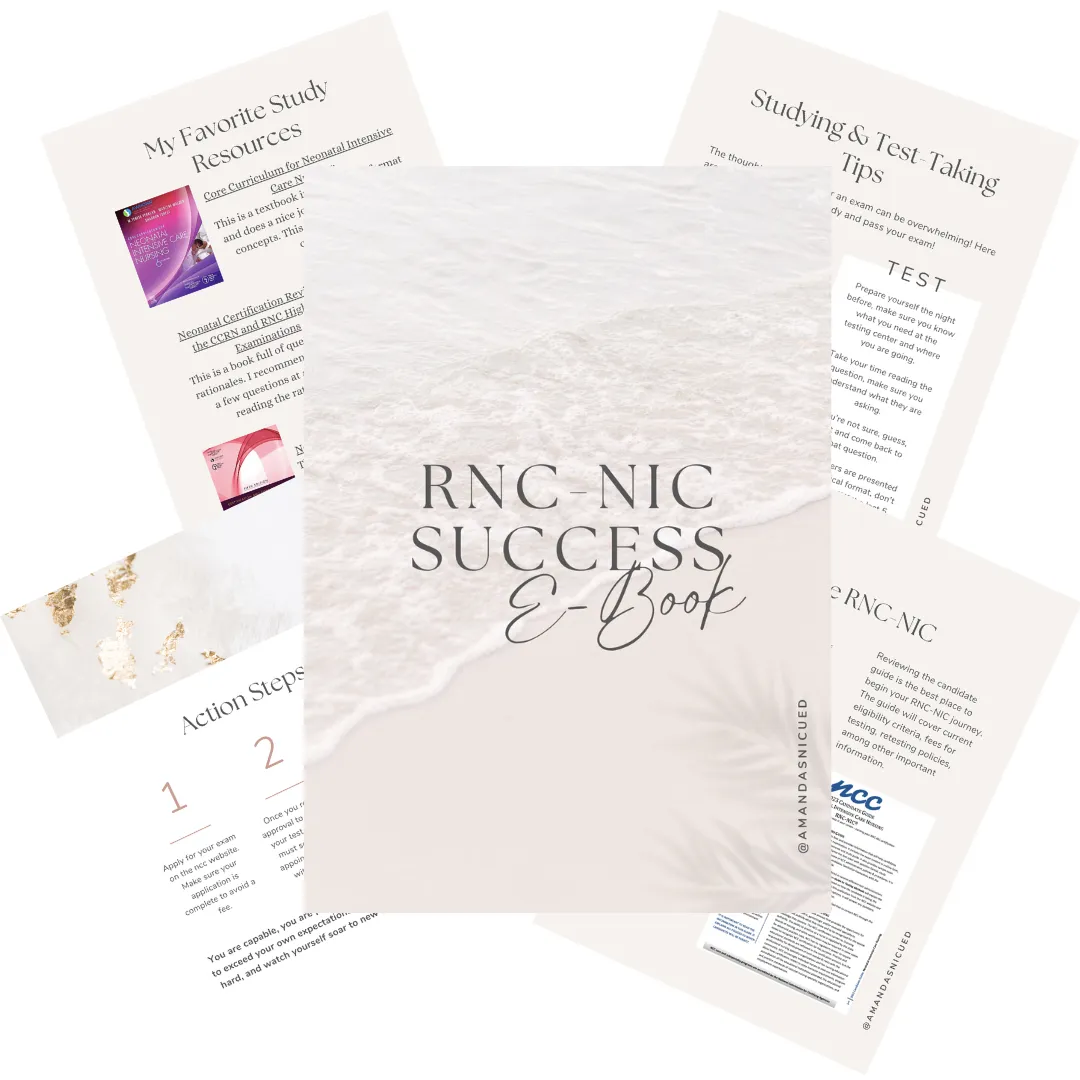
Ready to kickstart your journey to becoming a certified NICU nurse?
Look no further!
Grab my FREE E-Book packed with essential study and test-taking strategies for the RNC-NIC.
In the E-Book I give you the resources you need including the link to access the candidate guide, several types of books to study from, some of my favorite strategies, an outline of the content you should review, and a blank calendar for you to make your study plan!
Frequently Asked Questions About the RNC-NIC exam

What is the RNC-NIC?
The RNC-NIC is a competency-based exam that tests the specialty knowledge of nurses in the United States & Canada who care for critically ill newborns and their families.
The RNC-NICU is a nationally recognized certification that recognizes the registered nurse for their specialty knowledge and skill.
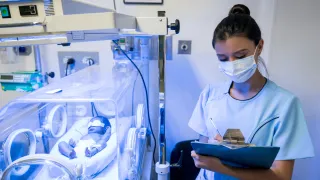
Who can take the RNC-NIC exam?
Nurses can take this exam after a minimum of two years experience in the NICU caring for critically ill newborns and their families.

Which books should I use?
I'm glad you asked! There are many excellent books to help you prepare for the RNC-NIC, I gathered ande describe each of them for you in my FREE e-book.
Is there a course to help me study?
Yes! Many hospitals host their own certification course and there are a few online courses. See my RNC-NIC test taking tips E Book for more information
What happens if I don't pass the exam?
If you don't pass the exam on your first try you can try again after 90 days. You will have to reapply after 90 days and pay a retest fee. There is no limit to the number of times you can take the exam (however a candidate can only sit for the exam twice per year).
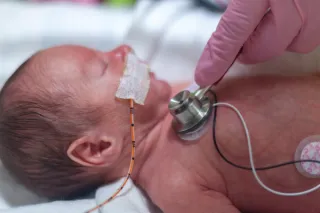
Can I make more money if I take the RNC-NIC exam and get certified?
Yes! Many hospitals provide a raise or a bonus for nurses with specialty certifications. Hospitals also typically hire at a higher base salary when nurses have a certification.

Find me @amandasnicued on these channels or Email me
hey nurses don't miss out
© Copyright 2024. AmandasNICUEd. All rights reserved. | Terms & Conditions | Privacy Policy Contact: [email protected]
